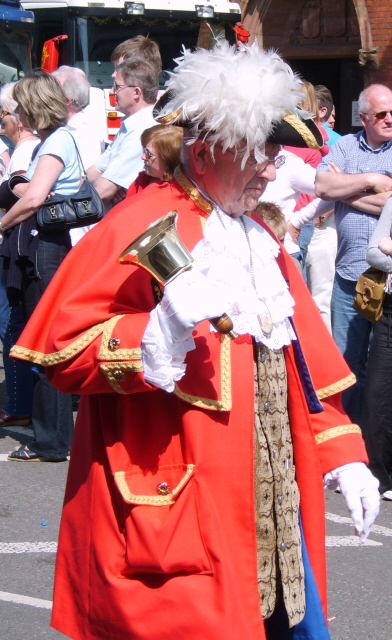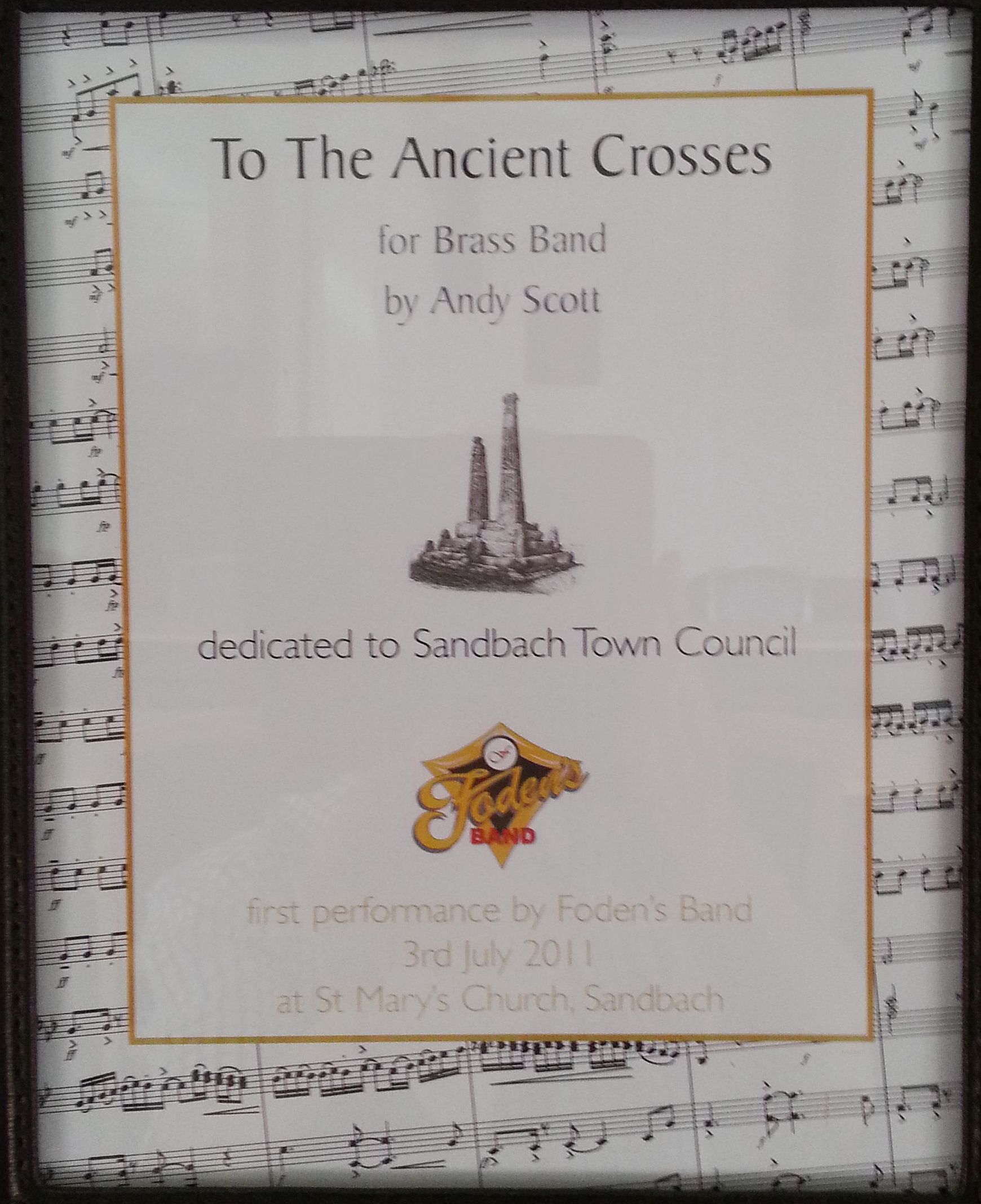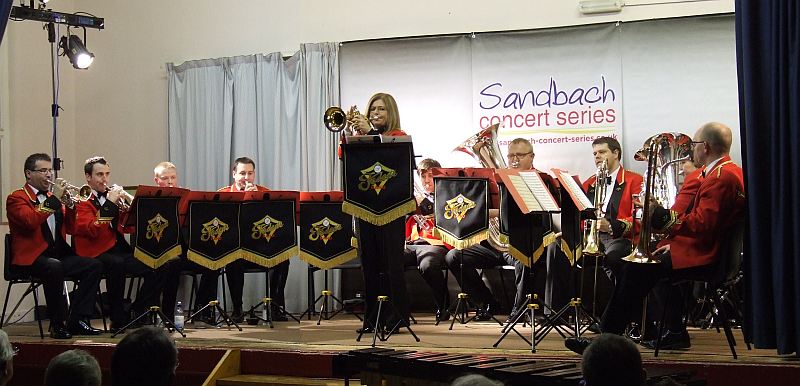|
Sandbach Crosses
The Sandbach Crosses are two 9th-century stone Anglo-Saxon crosses now erected in the market place in the town of Sandbach, Cheshire, England. They are unusually large and elaborate examples of the type and are recorded in the National Heritage List for England as a designated Grade I Listed building#England and Wales, listed building, and a scheduled monument. History The most recent and authoritative dating places the larger cross from the early part of the 9th century, and the smaller from about the middle of that century. Older theories, now outdated, included the view that they were erected to commemorate the conversion to Christianity of Peada of Mercia about 653. Other sources date them to the 9th century. The original site of the crosses is unknown and it is believed that they were brought to Sandbach in the Middle Ages. The earliest documentary evidence is by William Smith, the Rouge-Dragon Pursuivant at Arms of Elizabeth I of England, Elizabeth ... [...More Info...] [...Related Items...] OR: [Wikipedia] [Google] [Baidu] |
Anglo-Saxon Cross
Anglo-Saxon art covers art produced within the Anglo-Saxon period of English history, beginning with the Migration period style that the Anglo-Saxons brought with them from the continent in the 5th century, and ending in 1066 with the Norman Conquest of England, whose sophisticated art was influential in much of northern Europe. The two periods of outstanding achievement were the 7th and 8th centuries, with the metalwork and jewellery from Sutton Hoo and a series of magnificent illuminated manuscripts, and the final period after about 950, when there was a revival of English culture after the end of the Viking invasions. By the time of the Conquest the move to the Romanesque style is nearly complete. The important artistic centres, in so far as these can be established, were concentrated in the extremities of England, in Northumbria, especially in the early period, and Wessex and Kent near the south coast. Anglo-Saxon art survives mostly in illuminated manuscripts, Anglo-Saxo ... [...More Info...] [...Related Items...] OR: [Wikipedia] [Google] [Baidu] |
Celtic Knot
Celtic knots ( ga, snaidhm Cheilteach, cy, cwlwm Celtaidd, kw, kolm Keltek, gd, snaidhm Ceilteach) are a variety of knots and stylized graphical representations of knots used for decoration, used extensively in the Celtic style of Insular art. These knots are most known for their adaptation for use in the ornamentation of Christian monuments and manuscripts, such as the 8th-century St. Teilo Gospels, the Book of Kells and the Lindisfarne Gospels. Most are endless knots, and many are varieties of basket weave knots. History The use of interlace patterns had its origins in the late Roman Empire. Knot patterns first appeared in the third and fourth centuries AD and can be seen in Roman floor mosaics of that time. Interesting developments in the artistic use of interlaced knot patterns are found in Byzantine architecture and book illumination, Coptic art, Celtic art, Islamic art, Kievan Rus'ian book illumination, Ethiopian art, and European architecture and book illum ... [...More Info...] [...Related Items...] OR: [Wikipedia] [Google] [Baidu] |
Listed Buildings In Sandbach
Sandbach is a civil parish in Cheshire East, Cheshire, England. It contains 78 buildings that are recorded in the National Heritage List for England as designated listed buildings. Of these, two are listed at Grade I, the highest grade, two are listed at Grade II*, the middle grade, and the others are at Grade II. The parish includes the market town of Sandbach, and the villages of Elworth, Ettiley Heath and Wheelock, and most of the listed buildings are in these settlements. These include houses, shops, public houses, churches, a school, public and commercial buildings and structures associated with them. The most important listed structure in the parish are the two 9th-century Sandbach Crosses, which were recorded in the town in the mid-16th century and were reinstalled in the Market Square in 1816. The other Grade-I-listed building is Old Hall Hotel, a timber-framed building dating from 1656, on the site of a former manor house. One of the earliest public hou ... [...More Info...] [...Related Items...] OR: [Wikipedia] [Google] [Baidu] |
Grade I Listed Buildings In Cheshire East
There are over 9,000 Grade I listed buildings in England. This page is a list of these buildings in the unitary authority of Cheshire East. Listed buildings Notes See also * Grade I listed buildings in Cheshire ** Grade I listed buildings in Cheshire West and Chester ** Grade I listed buildings in Cheshire East ** Grade I listed buildings in Warrington ** Grade I listed buildings in Halton (borough) *Grade II* listed buildings in Cheshire The county of Cheshire is divided into four unitary authorities: Cheshire West and Chester, Cheshire East, Warrington, and Halton. As there are 390 Grade II* listed buildings in the county, they have been split into separate lists for each un ... References External links {{DEFAULTSORT:Cheshire East * ... [...More Info...] [...Related Items...] OR: [Wikipedia] [Google] [Baidu] |
Crosses At Sandbach C
{{disambig, geo ...
Crosses may refer to: * Cross, the symbol Geography * Crosses, Cher, a French municipality * Crosses, Arkansas, a small community located in the Ozarks of north west Arkansas Language * Crosses, a truce term used in East Anglia and Lincolnshire Music * Crosses (band), a musical project featuring members of Deftones and Far * ''Crosses'' (Crosses album) * ''Crosses'' (EP), by Jose Gonzalez * ''Crosses'' (Zornik album), the fourth album by the Belgian rock band Zornik * "Crosses", a track on the José González album Veneer See also *Cross (other) *Crosse Crosse is a surname, and may refer to: * Andrew Crosse (1784–1855), British amateur scientist * Charles Crosse, British rugby * Charles G. Crosse, American physician and politician * Edmond Francis Crosse (1858-1941), first Archdeacon of Cheste ... [...More Info...] [...Related Items...] OR: [Wikipedia] [Google] [Baidu] |
Sandbach Crosses C
Sandbach (pronounced ) is the name of a historic market town and a civil parish in the unitary authority of Cheshire East, Cheshire, England. The civil parish contains four settlements: Sandbach itself as the largest, Elworth, Ettiley Heath and Wheelock. Sandbach is perhaps best known as the original home of Foden and ERF lorries, though neither company now exists in the town; twelve-times National Brass Band Championship winners Foden's Band; the ancient Saxon Sandbach Crosses; and Sandbach services on the M6 motorway. History Known as Sanbec in 1086, Sondbache (also Sondebache) in 1260, and Sandbitch in the 17th–18th centuries, Sandbach derives its name from the Anglo-Saxon ''sand bæce'', which can mean "sand stream" or "sand valley". The modern German word ''Bach'', with a similar origin as ''bæce'', means "brook"; thus, the meaning of Sandbach can be understood correctly in German. In Germany, there are two places and several small waterways of that name, see Germa ... [...More Info...] [...Related Items...] OR: [Wikipedia] [Google] [Baidu] |
Andy Scott (saxophonist And Composer)
Andy Scott (born 15 June 1966 in Bournemouth) is a British tenor saxophonist, "equally at home in jazz and classical contexts", and award-winning composer who has made "important and sometimes mould-breaking contributions to the repertoire". He is currently Composer in Residence for Foden's Band. He has played with the Halle Orchestra, has formed and played with several ensembles whose musical style is rooted in big band jazz, Latin and funk.Christopher Thomas,CD Review: A World Within - The Music of Andy Scott, 4barsrest.com, 5 January 2011, retrieved 29 November 2015 Career Saxophonist Andy Scott is a founder member and saxophonist of the Apollo Saxophone Quartet. Formed in 1985, it won the 1992 Tokyo International Chamber Music Competition, and has commissioned over 100 contemporary works for saxophone quartet.Mark Wilkinson,Composer In Residence, Foden's Band, retrieved 28 November 2015 He is the founder and lead saxophonist of SaxAssault, that has collaborated with gues ... [...More Info...] [...Related Items...] OR: [Wikipedia] [Google] [Baidu] |
Foden's Band
Foden's Band (originally Foden's Motor Works Band, and variants with sponsors' names) is a brass band from Sandbach in Cheshire. The band derives its name from the Foden manufacturer of trucks in Sandbach. Foden's Band are one of the top brass bands in the world; regularly appearing at the top of the "World of Brass – World Rankings" In 2012, Foden's became double winners of both the National Championships and the British Open. History Origins The origins of the band go back to 1900 when the village of Elworth near Sandbach in Cheshire formed its own band having been let down in its attempt to secure the services of the nearby town band to feature in the celebrations marking the relief of Mafeking in the Boer War. After a couple of years the village band was wound up, but from that base local industrialist Edwin Foden formed the Fodens Motor Works Band. For a few years the new band had modest ambitions, but in 1908 a fundamental reorganisation took place and, by t ... [...More Info...] [...Related Items...] OR: [Wikipedia] [Google] [Baidu] |
Sotheby's
Sotheby's () is a British-founded American multinational corporation with headquarters in New York City. It is one of the world's largest brokers of fine and decorative art, jewellery, and collectibles. It has 80 locations in 40 countries, and maintains a significant presence in the UK. Sotheby's was established on 11 March 1744 in London by Samuel Baker, a bookseller. In 1767 the firm became Baker & Leigh, after George Leigh became a partner, and was renamed to Leigh and Sotheby in 1778 after Baker's death when Leigh's nephew, John Sotheby, inherited Leigh's share. Other former names include: Leigh, Sotheby and Wilkinson; Sotheby, Wilkinson and Hodge (1864–1924); Sotheby and Company (1924–83); Mssrs Sotheby; Sotheby & Wilkinson; Sotheby Mak van Waay; and Sotheby's & Co. The American holding company was initially incorporated in August 1983 in Michigan as Sotheby's Holdings, Inc. In June 2006, it was reincorporated in the State of Delaware and was renamed Sotheby's. In Ju ... [...More Info...] [...Related Items...] OR: [Wikipedia] [Google] [Baidu] |
Britannia Depicta
''Britannia Depicta'' was an illustrated road atlas for Britain. It was printed in numerous editions over many decades from 1720 into the 19th century and updated with engravings by many artisans who worked from drawings of other artists. It featured strip maps. The atlas was based on the earlier work of John Ogilby who published the first British road atlas in 1675. ''Britannia Depicta'' was printed in 1720 by Emanuel Bowen and John Owen's firm Bowen & Owen. It was one of Bowen's earliest works. A road atlas, it contains two hundred and seventy three road maps along with drawings of landmarks and miniature county maps of each of the counties of England and Wales. It followed on John Ogilby's original with updated style of historical and heraldic detail. It was an unusual feature of the atlas that the maps were engraved on both sides of each page, and this resulted in a handier-sized book. Cadell & Davies editions Cadell & Davies published its own editions of the ''Britann ... [...More Info...] [...Related Items...] OR: [Wikipedia] [Google] [Baidu] |







.jpg)